#ballet technique
Explore tagged Tumblr posts
Note
can you explain renata shakirova's "technical shortcomings" as you mention? i dont follow mariinsky but she has a pretty big fanbase and is beloved on here from what ive seen so i was surprised to read that!!
Hello! I think the most significant issues I noticed in her Swan Lake debut are these:
Lack of engagement in the supporting leg affected the quality and suspension of her extensions. Some developpe's looked thrown rather than held. This weakness was prominent in a ballet that is so dependent on adagio.
Arabesques that were in some cases completely turned in with closed hips. It was essentially unflattering, distorted a la second and the lack of strength in the upper thigh/hip was evident. These turnout issues weren't limited to pique arabesques but also pirouettes and even poses a terre.
She made port de bras choices that were simultaneously unflattering and inefficient. I honestly wondered how this happened? Is this what her coach Tatyana Terekhova was advising her to do? Terekhova had similar strengths to Shakirova so I've always considered this a good combination. Although Terekhova did dance O/O, she was more renowned in powerhouse roles. Is she the best coach for Shakirova in this role? I don't have an answer, it's hard to balance the extreme differences in outcomes between Shakirova's Nikiya and O/O
11 notes
·
View notes
Text
youtube.com/watch Ballet class Vaganova https://youtu.be/5rMN4vFS11A?si=cZkSFzsFHqYr-vts
View On WordPress
0 notes
Text

#ffxiv#emet selch#hythlodaeus#fanart#ff14#i keep thinking about them doing ballet together soon i draw grown up men post transition back at the dance studio again#just for fun#it’s just emet holding back hythlodaeus from doing any stupid shit cold#he’s shouting from across the studio floor telling for him to warm up and he’s just taking the piss frolicking#hyth even young and older prefers partnering since he’s mostly doing supporting emet at his waist while he’s turning#old habits die hard and he’s trying to lift him constantly#emet praying he doesn’t drop him#hyth accidentally getting hit from a stray working leg#emet en pointe doing pirouettes and hyth’s like yea you still got it while he’s just there seething about his diminished technique#ITS JUST NOT THE SAME#says the guy who quit first#give emet something to focus and mald over and he’ll make it back
24 notes
·
View notes
Text
What 'War and Peace' is to the novel and 'Hamlet' is to the theatre, Swan Lake' is to ballet - that is, the name which to many people stands for and sums up an art form.
Robert Gottlieb
It’s hard to believe that Swan Lake’s original premiere was seen as disastrous. When it first performed on 4 March 1877, at Moscow’s Bolshoi Theatre.
Tchaikovsky’s magical ballet tells the story of the doomed love of Prince Siegfried and Princess Odette. Prince Siegfried goes out hunting one night and chases a group of swans – one of them transforms into a young woman, Odette, who explains that she and her companions were turned into swans by the evil Baron Von Rothbart. The spell can only be broken if someone who has never loved before swears an oath of undying love and promises to marry her. The Prince declares his love to Odette and promises to be loyal forever.
At a grand reception at the palace, the Prince must choose a bride – but he can think only of Odette. Suddenly a fanfare announces the arrival of two guests - it is Odette! The prince dances with her and asks for her hand in marriage. But it’s not Odette - the mystery woman is the daughter of the evil von Rothbart, Odile. Odette has witnessed the whole scene. Too late, Siegfried realises his mistake.
Siegfried follows Odette to the lake and begs her forgiveness. She says she forgives him but nothing can change the fact he broke his vow. They decide to die together. The lovers throw themselves into the lake.
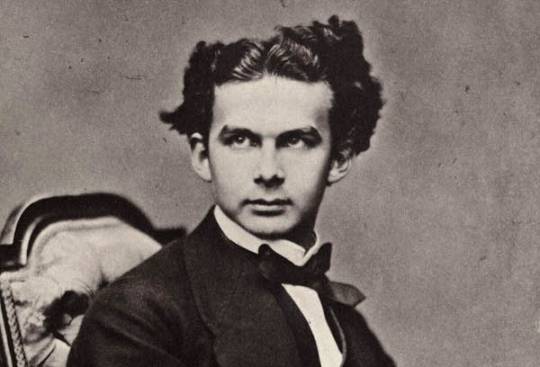
There are a few different theories as to how Tchaikovsky came up with the idea for Swan Lake. Though the libretto is based on a story by the German author Johann Karl August Musäus The Stolen Veil, many of Tchaikovsky’s contemporaries claimed that he was deeply fascinated by the tragic life story of Bavarian King Ludwig II - sometimes called the Swan King - who died under mysterious circumstances by drowning himself in a lake.
It is likely that Tchaikovsky chose Ludwig II as the prototype of Prince Siegfried. It is easy to tell that the composer clearly enjoyed working on the music for Swan Lake, as he wrote far more material than would ever be required. As a result, the version most commonly performed today is, in fact, an edited one, created after Tchaikovsky’s death and significantly shorter than the original work.
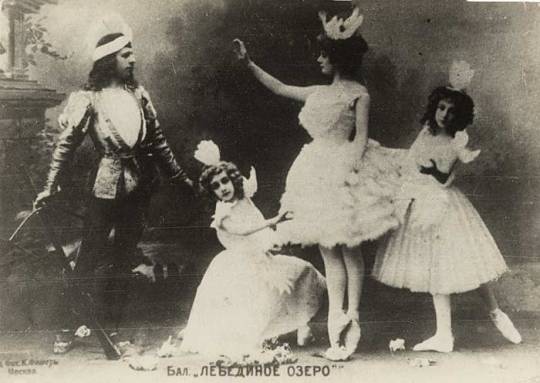
Considering that Swan Lake is currently the most frequently performed ballet in the world, it's hard to imagine that it was a failure upon its premiere, with near unanimous criticism of different production aspects. Critics were universally disparaging, claiming the production was indistinctive and forgettable. They disliked the set and the choreography, thought the orchestra and dancers were subpar, and thought Tchaikovsky’s score was too complicated. The dancers who performed in the ballet’s premiere also declared Tchaikovsky’s music was too rich to accompany their balletic moves, and simply too difficult to dance to.
Because of these distractions, the actual brilliant score by Tchaikovsky got largely overlooked amidst the chaos. Although a few critics did recognise the virtues of the masterful score, it was considered far too complex for ballet, too “noisy” and too “symphonic”, resembling the grand, weighty music of Richard Wagner. Even the initial ballet dancers deemed the music too difficult to dance to as its density clashed with the fluid and graceful balletic movements.
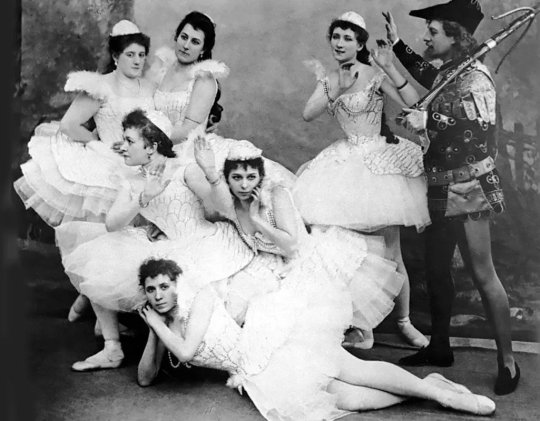
One of the issues for the premiere performance was the absence of the Bolshoi’s prima ballerina, Anna Sobeshchanskaya. Sobeshchanskaya rejoined the production as Odette/Odile in April 1877 but insisted on making certain changes to the choreography and score. Two years later the original choreographer, Julius Reisinger, left Moscow and was replaced by Belgian choreographer Joseph Pater Hansen. Hansen set about re-staging Swan Lake, launching his new version in January 1880. All 33 performances of the ballet between 1877-1883 sold out, attesting to the ballet’s increasing popularity amongst audiences.
A planned revival of the ballet in the early 1890s was cast into doubt by the death of Tchaikovsky in November 1893, who didn’t live to see the ultimate success of his ballet. Tchaikovsky had written far more material than was ever required, and after his death, Riccardo Drigo took on the job of revising Tchaikovsky’s score, with the approval of his brother Modest Tchaikovsky.
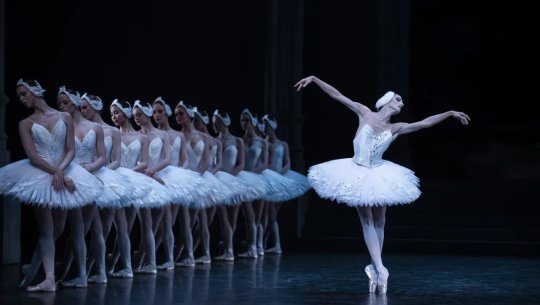
The revised and edited version ��� commonly the version of the score used today - is considerably shorter than the original, full-length work. It premiered on 15 January 1895 by the Maryinsky Ballet at the Maryinsky Theatre to overwhelmingly positive reviews.
Call it what you like - Dance of the Four Swans, Dance of the Cygnets, The Four Little Swans - but for me the pas de quatre from Swan Lake is one of the most iconic dances in one of the most iconic classical ballets of all time. It is a coveted role for a ballerina, one that requires technical precision and teamwork. The light-hearted Dance of the Cygnets involves 16 pas de chat performed by four dancers moving sideways in exact unison with their arms interlaced.
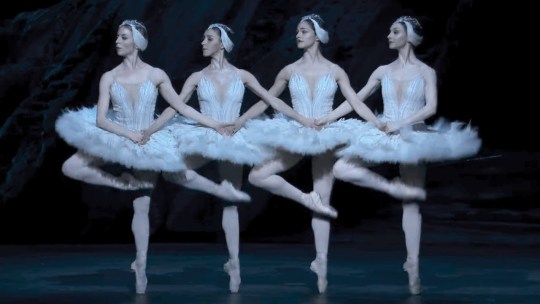
I’ve always found its spirit of sheer innocence and beauty breath-taking to watch. I’m left with wonder restored and a distinct feeling of the flight of innocence coming back to rest in my hardened heart.
Video: Royal Ballet's Swan Lake (2018)
#gottlieb#robert gottlieb#quote#tchaikovsky#swan lake#ballet#ballerina#music#dance#dancers#history#music history#technique#movement#pas de quatre#dance of the cygnets#pas de chat#beauty#arts#culture
281 notes
·
View notes
Text
concept: kakyoin being like "i have to find a horror movie that actually scares jotaro so he'll hold my hand!!" (ones that come close are "kairo/pulse" with that fucking walking ghost scene, the original and american versions of "ring," and maybe "the exorcist"), and when he finally tells jotaro his intentions, jotaro is like "dude if you wanted to hold my hand just ask"
#i consider myself really similar to jotaro in personality and somehow some horror movies actually still get to me lol#like i'm a ballet dancer and i know what's going on choreo-wise in that kairo scene but shit man#her technique is gorgeous but its still terrifying shfjsjfjd#one-sided jotakak#noriaki kakyoin#jojokes#jotaro kujo#stardust crusaders#shipping#jojo's bizarre adventure#jjba
28 notes
·
View notes
Text

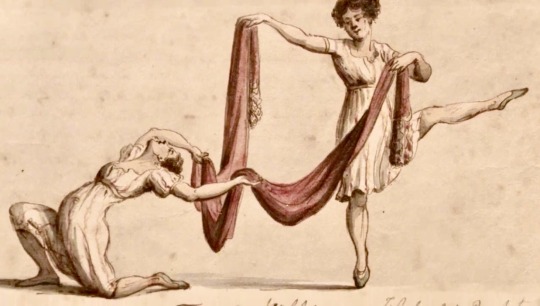
Köbbler Sisters in ‘pas de deux de Shawl’ —Watercolor illustration by Johannes Jelgerhuis, 1812, Napoleonic era
According to Manon Schooneman, this illustration (drawn in 1812) is the earliest documented evidence of pointe ballet, which is the style of ballet where dancers stand on their toes.
This drawing was a surprising discovery because it was widely believed that the pointe technique was first performed in 1825 by the Swedish-Italian ballerina Marie Taglioni.
Background on the drawing:
Depicts an Austrian-German family of dancers, the sisters Köbbler, who moved to the Netherlands (which was then part of the French state under the Napoleonic Empire) in the 1810s.
(Source: Allard Pierson Vertelt: Tekening van de eerste spitz)
#ballet#pointe#pointe technique#Johannes Jelgerhuis#Jelgerhuis#napoleonic era#napoleonic#first french empire#french empire#19th century#ballerinas#history#dutch history#Köbbler Sisters
23 notes
·
View notes
Text
ok i am going to be brave tomrrow and ask my friend whose climbing gym membership got me into yoga class for free a few weeks ago whether that's a sustainable thing for me to come along to frequently and/or just pay the nonmember fee at the door a few times. i should really just find a different yoga class that isn't gated on climbing gym membership but this one 1. didn't make me miserable by asking me to meditate 2. was the right level of difficulty for me, a worm whose only skill is being kind of ok at pigeon pose 3. has my fwiends in it sometimes and will therefore cause me to be motivated to actually attend/have a strong impetus to leave work for it
#now i obviously haven't figured out what to do about Wrist Problems but either the instructor will have suggestions#or she won't have suggestions.#box opener#Committing Publicly so i don't Chicken Out#i miss the parts of ballet where i like. had musculature. and did a lot of supervised flexibility and balance and bodyweight work#i don't honestly miss the parts where i was obsessing about technique all the time. im not into technique right now#i dn't want to have to look in the mirror all the time and think about whether my arm angle looks good or bad.#i just want to get incrementally better at lunges and also front folds again. bc i like doing them.
14 notes
·
View notes
Text

I'm a simple person: I see void (Mournfinale) song, I go :DDDDDDDD
Anyways. Um. Great. Now there's 5 of them-
#Y'know how I mentioned that T.echnicolour made me read abt the movie making technique#And S.tasis made me read about airships#Yeah. I read about Swan Lake (the ballet play) because of her#I think this falls more to “I'll make part of their personality a ref to the thing (like Techni being a filmmaker) I randomly read of”#So yeah. She likes ballet on the side. And was mostly existing peacefully with LH for a while#Until A.rghena cause the whole irruption event that LH was made known to Arcaea for the first time#<- although. Idrk how to add AN on top of this plotline :V#ally's ocs#original character#gijinka#OC: Swan Song
8 notes
·
View notes
Text
"ballet should be an olympic sport!!" please don't take one of the only sports we have left that still focuses on artistry and make it an olympic sport i'm begging you
#how long until it turns into a competition on who can do the most fouettes#just like it happened with figure skating#you rarely see huge beautiful jumps anymore cause who cares about good technique!! at least they're quads!!!#and spins are alwaysss the same#it's all about points it's boring it's predictable i'd hate to see the same happen to ballet
10 notes
·
View notes
Note
guy breakdancing pls

heres guy if he was cool as fuck. if he were goated and coated in the thick sauce.
i think hed hate breakdancing , he does dance but definitely not like that. upper body strength is crazy tho
thank you for this request i loved it a lot :]]]]
#3laf#3 lives at freddy's#hi guy#guy dances#canon#think of grease#he dances like that#buds dancing shit like the jitterbug#swing#he also slow dances#and i also imagine he dabbles in ballet#when hes really really bored#breakdancing isnt something hed try#hed fail#really bad#hes got the strength for it#but no technique#L guy
4 notes
·
View notes
Text
General/ Misc Asks - Technique, Style, Training
This is sort of incoherent but quick question- In Ali’s variation, when they can choose to land and go all the way down. How???
Ahahaha, so you’re referring to when the dancer does a big assemble jump, lands in all the way down in grand plie, and then does a big explosive sissone out of it. Landing in that position requires a lot of quad and glue strength, which, you guessed it, is built over years of practice: grand plies in ballet class, working out in the gym, pilates and calisthenics etc
Hi! I am 25 and want to become a great ballerina. Not professionally or anything, but just for me. I danced from age 2-11 and then stopped so I have a fairly decent grasp on the concept of ballet. I was wondering if you have any tips for someone starting from scratch? I’m not overweight but I have virtually no strength or stamina. I’m not terribly flexible and my hips are weak. Basically, I’m wondering what routine of classes/exercises/stretches you would recommend and how often. Thanks!!
My first and most important piece of advice: GO TO CLASS. Find a good studio or school that has quality teachers, ideally someone who has experienced life as a professional and has credentials or a good body of work as a teacher. Do your research!
If you can make it to class around 3 times a week, that’s a great start as an adult beginner.
In addition, I recommend incorporating daily yoga/stretching, balancing with pilates and some lightweight training a few times a week, and your preferred form of cardio.
Hi Ale! I have a question: are some styles of executing movements (Vaganova, Balanchine etc) harder than others? Or are they all similarly difficult but just different?
I tend to argue the latter, I personally find the Balanchine technique more difficult but that’s because I didn’t train in a Balanchine school. A lot depends on a dancer's education as well as what kind of company they end up dancing in and the repertoire performed there.
you at some point commented on how a ballerina (i don't remember her name) struggled with keeping her heels down in plies. i used to dance - amateur, but i did love it - and had difficulty with that as well. are there any stretches/exercises that can help, or is it just that some people are born with a better ankle configuration than i have?
Some people definitely have more flexible ankles and Achilles tendons. However, improvement is totally possible and honestly a good idea for people in general. Look up ankle mobility drills as well as Achilles and calf stretches.
Hi Ale! I don't know if this is going to be a very unpopular ask, but do you think the tall ballerina era ruined some things forever in ballet, or at least in Russian ballet? Watching Ulanova, Plisetskaya, Makarova, Bessmertnova etc, in SL is so perfect. With their puffy tutu and small limbs, they look like a perfect, fragile swan, due to their small figures. Nowdays, super tall ballerinas, with giagantic flat tutus can't look like a Odette at all (I take Lopatkina off this list). Maybe a Odile.
I’m not going to say ‘ruined’ but the tall aesthetic, especially the super skinny body type promoted by Balanchine that then extended worldwide, has absolutely and irrevocably changed ballet. Different physical traits and skills are treated as valuable as are different tempos and styles of choreography. I also think its important to note that the dancers you listed have quite different body types, I wouldn't say Plisetskaya and Markarova have similar physiques
18 notes
·
View notes
Text
youtube.com/watch Stanislav Vlasov https://youtu.be/Rj2TJ4K9_68?si=vu78SNXS4J_eS5RF
View On WordPress
0 notes
Text
barre with me🩰✨💕
February 24th 2024
More exciting news! 🤗🥳
Our creative director will be stepping away for a few weeks. As a part of a fellowship program with the US, she’ll be working with dance studio abroad for the next month and a half.
In her absence, I’ll stepping in as interim rehearsal director for our Graham technique classes.
Super excited for the opportunity continue growing and learning as a dancer while sharing what I’ve learned with others💞
image📸: Martha Graham Dance Company on Instagram
*image taken from Pinterest*
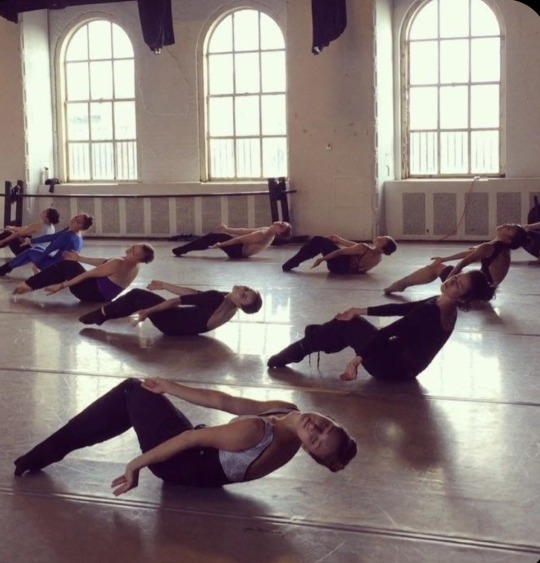
#balletcore#ballet#ballet aesthetic#ballet core#coquette#ballerina#ballerina aesthetic#girlblogging#ballet photography#graham technique#Martha Graham#modern dance#modern dancers#black ballerinas#ballet barre#black blogger#black ballerina#black ballet#black women in leisure#black women in femininity#soft black women#ballet folklorico#ballet costumes#ballet class#dance classes#dance teacher#dance rehearsal#rehearsal#dance journey#dancers come in all sizes
8 notes
·
View notes
Text
okay. fully understand that the general public will not understand or care about technical ballet terms and that it’s a complete nonissue and meaningless throwaway in my book
but reading fouettés being described simply as “spins on one foot” is hurting something in my soul 😂 fouettés are a bitch. and this character did 32 in a row??? without moving from her position??? i could manage maybe 3-4 before i was wobbling all over the place and my grounding foot was shifting
like these were the turns we spent YEARS building the technique and strength to be able to perform. in theory they’re relatively simple but if your grounding foot slides even an inch you’re not perfect. and ballet is all about perfection. nothing out of place.
anyways. i was a terrible ballerina, never built for it. but i cannot let this little piece of writing go lol. it just feels like the author did the most surface level research for ballet terms and threw it into this book to attempt to make it feel like she knew what she was talking about lmao
#ramble on exie#for the record- i hated ballet#but i still worked my ass off at it and took 8? different exams in it#so like. the technical terms are seared into my brain. and i can still hear the lectures about technique and my shortcomings from teachers#weird hill to die on but i am not moving. this is going to dig at me for a while lmaoooo#had to google- i made it to intermediate or advanced foundations- can’t remember which#like i was in my vocationals. thats how serious i was about dance#fouettés can kiss my ass though my god
2 notes
·
View notes
Text
okay so like
take cure mermaid's ballet-esque transformation and flora winx club's theming but with yellow flowers and then add violin and that's yaevinn's transformation
#; the citrus speaks#; this bard needs therapy#i am in fact still on this#i'm watching go! princess precure for raw listening practice#and cure mermaid was doing such elegant ballet techniques#and i was just like “EEEEE” bc it's EXACTLY what i was thinking of with yaevinn#okay i might be done now#or not!
3 notes
·
View notes
Text

abso-fucking-lutely not but thank you for believing in me like that
#disclaimer: i don't know jack shit about ballet that's why we're here#ballet#ballerina#studying#study notes#study#notes#ballet techniques#technical ballet#before you say “you need a teacher/coach”#i KNOW but some of us are POOR jessica
2 notes
·
View notes